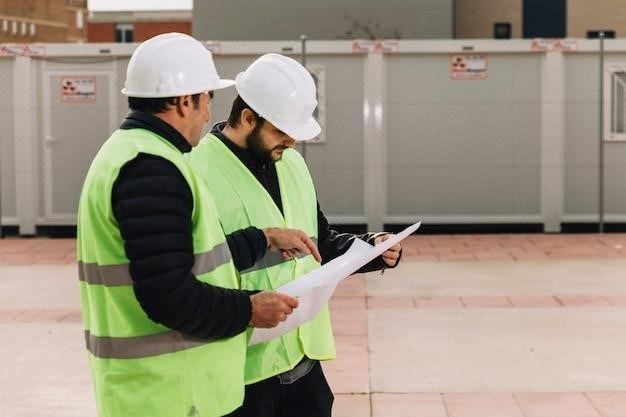SPCC Regional Inspectors Guide⁚ Overview
This document provides a comprehensive guide for regional EPA inspectors on the Spill Prevention‚ Control‚ and Countermeasure (SPCC) rule‚ outlining its applicability‚ requirements‚ and the role of the inspector in its implementation.
Introduction
The Spill Prevention‚ Control‚ and Countermeasure (SPCC) rule‚ outlined in 40 CFR Part 112‚ is a cornerstone of environmental protection‚ aiming to prevent oil discharges into navigable waters and adjoining shorelines. This guide‚ designed for regional EPA inspectors‚ provides a detailed understanding of the SPCC rule’s requirements‚ its applicability‚ and the role of the inspector in its effective implementation. It serves as a valuable tool for ensuring consistent and efficient enforcement of the SPCC rule across the country.
Purpose and Scope
This SPCC Regional Inspectors Guide is designed to provide regional EPA inspectors with a comprehensive understanding of the SPCC rule and its application in various settings. It aims to foster a consistent and effective approach to enforcing the SPCC rule by clarifying its provisions‚ outlining the responsibilities of inspectors‚ and offering guidance on common areas of interpretation. This guide serves as a valuable resource for inspectors in conducting facility inspections‚ reviewing SPCC plans‚ and ensuring compliance with the rule’s requirements. It covers a wide range of topics‚ from applicability criteria and exemptions to inspection procedures‚ integrity testing‚ and environmental equivalence;
Target Audience
This guide is primarily intended for regional EPA inspectors responsible for overseeing the implementation of the SPCC rule. It provides them with the necessary knowledge and tools to effectively review facility compliance‚ conduct inspections‚ and ensure the proper development and maintenance of SPCC plans. However‚ the guide’s scope extends beyond inspectors‚ offering valuable insights to owners and operators of facilities subject to the SPCC rule‚ as well as the general public. By providing a clear understanding of the rule’s intent and requirements‚ this guide promotes informed decision-making and fosters a collaborative approach to preventing oil spills and protecting the environment.

SPCC Rule Applicability
This section details the criteria that determine whether a facility is subject to the SPCC rule‚ outlining the general applicability and exemptions.
General Applicability Criteria
The SPCC rule applies to non-transportation related facilities that possess an aggregate aboveground oil storage capacity exceeding 1‚320 gallons or a completely buried storage capacity greater than 42‚000 gallons. Additionally‚ the facility must have the potential to discharge oil into navigable waters or adjoining shorelines. This potential can be established through factors such as the presence of storm drains‚ ditches‚ or other pathways connecting the facility to navigable waters. Facilities that solely transfer oil through pipelines are generally exempt from the SPCC rule‚ but there may be exceptions based on specific circumstances.
Exemptions and Waivers
The SPCC rule offers exemptions and waivers for specific situations. Facilities that exclusively transfer oil through pipelines are typically exempt‚ unless there is a potential for discharge due to factors like leaks or spills. Additionally‚ certain facilities‚ such as those involved in the production‚ gathering‚ or processing of oil‚ may qualify for exemptions if they comply with specific conditions. Waivers can be granted for facilities that can demonstrate that an SPCC Plan would be impractical‚ as long as they implement alternative measures to prevent oil spills. These waivers require approval from EPA and are subject to specific criteria and conditions.
SPCC Plan Requirements
This section details the essential components and procedures for developing‚ implementing‚ and maintaining a compliant SPCC Plan.
Plan Development and Content
The SPCC Plan must be developed and maintained in accordance with the requirements of 40 CFR Part 112. This includes a detailed description of the facility‚ its oil storage and handling operations‚ potential sources of oil discharges‚ and the measures in place to prevent‚ control‚ and countermeasure oil spills. The plan must also include a comprehensive contingency plan outlining the steps to be taken in the event of an oil spill. The plan should be reviewed and updated at least every five years or whenever there are significant changes to the facility or its operations.
Implementation and Maintenance
The SPCC Plan must be implemented and maintained effectively to ensure ongoing compliance with the SPCC rule. This involves ensuring that all personnel involved in oil handling operations are adequately trained and knowledgeable about the plan’s requirements. Regular inspections and maintenance of oil storage and handling equipment are crucial‚ as are drills and exercises to test the effectiveness of the facility’s spill response plan. The owner or operator must also maintain records of all inspections‚ tests‚ and maintenance activities‚ as well as any modifications made to the SPCC Plan. These records should be readily available for review by EPA inspectors.
Inspection‚ Evaluation‚ and Testing
This section covers the procedures for inspecting‚ evaluating‚ and testing oil storage and handling equipment to ensure compliance with the SPCC rule.
Inspection Procedures
Regional inspectors play a crucial role in ensuring compliance with the SPCC rule by conducting thorough inspections of facilities. These inspections involve a comprehensive assessment of the facility’s oil storage and handling equipment‚ as well as the implementation of the SPCC plan. Inspectors evaluate the facility’s adherence to the SPCC rule’s requirements‚ including the adequacy of containment measures‚ the integrity of storage tanks and piping‚ and the effectiveness of spill prevention and response procedures. They also verify the accuracy and completeness of the facility’s SPCC plan documentation and records.
Integrity Testing Requirements
The SPCC rule mandates regular integrity testing of oil storage containers and associated piping to ensure their structural soundness and prevent leaks or spills. Regional inspectors are responsible for verifying that facilities conduct these tests according to the rule’s specifications. This includes evaluating the frequency and methodology of the tests‚ the qualifications of the personnel performing them‚ and the documentation of test results. Inspectors also assess whether the facility has implemented corrective actions for any identified deficiencies revealed by the integrity testing.
Reporting and Documentation
The SPCC rule requires facilities to maintain detailed records of all inspections‚ evaluations‚ and testing conducted under the SPCC plan. Regional inspectors play a crucial role in ensuring that these records are accurate‚ comprehensive‚ and readily available for review. This includes verifying the documentation of inspection findings‚ integrity test results‚ and any corrective actions taken. Inspectors also ensure that the facility maintains records of its SPCC plan‚ including any amendments or updates‚ and that these records are easily accessible to EPA personnel during inspections.
Additional Considerations
This section delves into specific aspects of the SPCC rule that require careful consideration by regional inspectors during their review process.
Environmental Equivalence
The SPCC rule allows for the use of alternative methods or technologies that provide an equivalent level of environmental protection compared to the standard requirements. This concept‚ known as environmental equivalence‚ is a crucial consideration for regional inspectors. When evaluating a facility’s SPCC plan‚ inspectors must determine if the proposed alternative methods meet the same level of protection as the standard requirements. This assessment involves considering factors such as the effectiveness of the alternative method in preventing and responding to spills‚ the potential environmental impacts‚ and the feasibility of implementation. The guidance document clarifies that the burden of proof for demonstrating environmental equivalence lies with the facility owner or operator.
Secondary Containment
Secondary containment is a critical component of SPCC plans‚ designed to prevent the spread of oil in the event of a spill or leak. The guidance document emphasizes the importance of secondary containment systems for aboveground storage tanks and other oil-containing equipment. Regional inspectors play a vital role in ensuring that these systems are properly designed‚ constructed‚ and maintained. The guidance clarifies the requirements for secondary containment‚ including capacity‚ structural integrity‚ and leak detection mechanisms. Inspectors must evaluate the effectiveness of secondary containment systems‚ considering factors such as the type and volume of oil stored‚ the potential for spills‚ and the surrounding environment. They also need to verify that the systems are regularly inspected and maintained to ensure their continued effectiveness in preventing oil releases.
Impracticability Determinations
The SPCC rule allows for impracticability determinations in situations where certain requirements‚ such as secondary containment‚ cannot be met due to unique circumstances. The guidance document provides detailed information on the process for making such determinations‚ outlining the criteria that must be met and the documentation required. Regional inspectors play a key role in reviewing these determinations‚ ensuring that they are based on sound technical justifications and that alternative measures are in place to minimize the risk of oil spills. The guidance emphasizes that impracticability determinations should be made on a case-by-case basis‚ considering the specific characteristics of the facility and the surrounding environment. Inspectors must carefully examine the justifications provided by the facility owner or operator and ensure that the proposed alternative measures are adequate to prevent oil discharges.
Role of the Regional Inspector
Regional inspectors play a crucial role in ensuring the effective implementation of the SPCC rule by reviewing facility SPCC plans‚ conducting on-site inspections‚ and evaluating compliance with the rule’s requirements. Their responsibilities include assessing the adequacy of spill prevention and control measures‚ verifying the accuracy of facility information‚ and ensuring that the facility has a qualified individual responsible for the SPCC plan. Inspectors also provide guidance to facility owners and operators on how to comply with the rule and address any deficiencies identified during inspections. Their expertise in the SPCC rule helps to promote consistent implementation and enforcement nationwide‚ contributing to the protection of water resources from oil spills.
